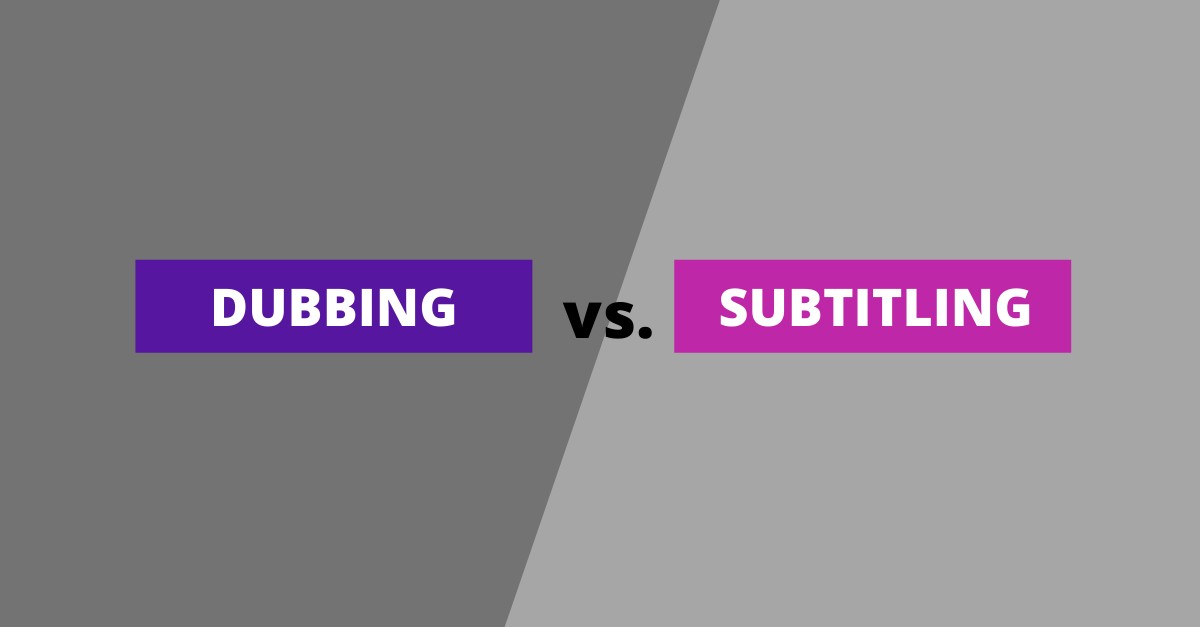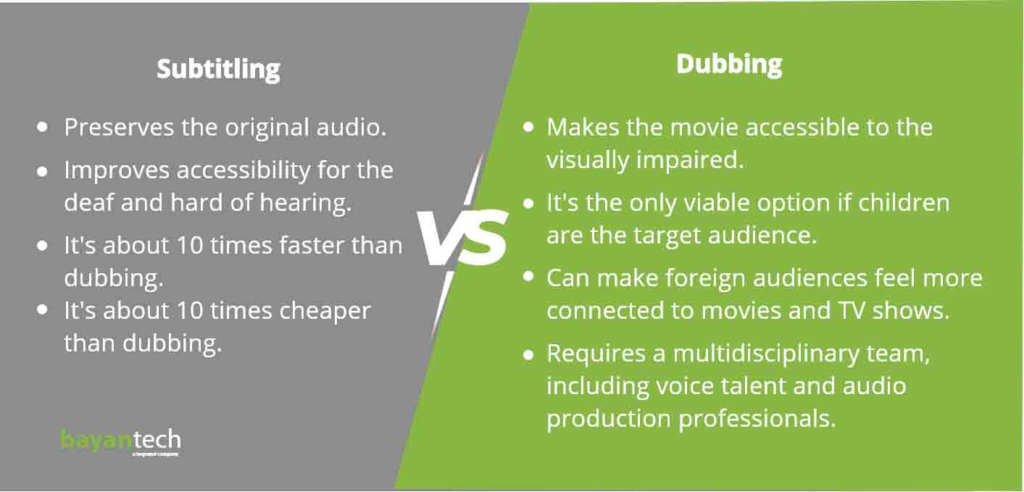
Table of Contents
Introduction to Subtitling and Dubbing
Lights, camera, action! When it comes to watching non-English content, the debate between subtitling and dubbing has been ongoing for years. As international films and series gain popularity worldwide, the way we consume them is evolving too. From traditional methods to innovative strategies, let’s dive into the exciting trends shaping the world of subtitling vs. dubbing for non-English content. Get ready to explore how localization services are revolutionizing the industry and why authenticity is becoming a key player in entertainment. Let’s embark on this cinematic journey together!
Traditional Methods vs. New Strategies

Subtitling and dubbing have long been the go-to methods for translating non-English content into languages understood by a broader audience. Traditional approaches involved either displaying subtitles at the bottom of the screen or replacing original audio with voice actors speaking in a different language.
However, as the entertainment industry evolves, new strategies are emerging to enhance viewer experience and cater to diverse preferences. One such trend is the use of dynamic subtitles that adapt to viewers’ reading speed, ensuring seamless comprehension without missing out on visual cues.
Moreover, advancements in technology have paved the way for real-time dubbing using AI-driven voice synthesis tools, allowing for quicker turnaround times and cost-efficient solutions for content localization. These innovative approaches are reshaping how non-English content is presented globally, offering more flexibility and customization options than ever before.
The Rise of Localization Services

As the global audience for non-English content continues to grow, the demand for localization services is on the rise. Localization goes beyond just translation; it involves adapting content to suit different cultural nuances and preferences.
Localization services ensure that viewers in diverse regions can fully immerse themselves in a story without feeling disconnected. This process includes not only translating dialogue but also adjusting references, jokes, and idioms to resonate with local audiences.
By investing in localization, content creators can reach a broader international market and foster stronger connections with viewers worldwide. It allows for a more authentic viewing experience that transcends language barriers.
In an increasingly interconnected world, localization services play a crucial role in bridging cultures and promoting diversity in media consumption. The attention to detail provided by these services enhances the overall quality of non-English content available to audiences globally.
Demand for Authenticity in Non-English Content
As the global audience for non-English content continues to grow, there is a surging demand for authenticity in storytelling. Viewers are seeking narratives that reflect diverse cultures and languages accurately, capturing the nuances and richness of each story being told.
Authenticity in non-English content goes beyond just language accuracy; it encompasses cultural references, social norms, and historical backgrounds unique to each region. Audiences crave a genuine portrayal of characters and their environments, allowing them to fully immerse themselves in the storyline.
By prioritizing authenticity in subtitling and dubbing strategies, creators can enhance the viewing experience for international audiences. This attention to detail not only respects the original creators’ vision but also resonates deeply with viewers who value cultural representation on screen.
In an era where diversity and inclusivity are at the forefront of conversations within the entertainment industry, authentic portrayals of non-English content play a crucial role in fostering understanding and appreciation across borders. By meeting this demand for authenticity, content creators can forge stronger connections with audiences worldwide.
Impact on the Entertainment Industry
The impact of subtitling and dubbing strategies on the entertainment industry is profound. As more non-English content gains popularity worldwide, the demand for high-quality localization services has skyrocketed. This shift has opened up new opportunities for international collaboration and cross-cultural exchange within the industry.
With audiences craving authenticity in storytelling, filmmakers and content creators are increasingly focusing on preserving the original nuances and cultural context of their work through accurate subtitling or dubbing. This attention to detail not only enhances viewer experience but also elevates the overall quality of foreign productions in global markets.
Moreover, as accessibility and inclusivity become key priorities for platforms and distributors, offering diverse language options through subtitling or dubbing has become essential. This approach not only broadens audience reach but also fosters a sense of representation for multicultural viewers around the world.
The evolving landscape of subtitling vs. dubbing strategies is reshaping how content is consumed globally, pushing boundaries, bridging linguistic gaps, and enriching the tapestry of stories available to audiences everywhere.
Accessibility and Inclusivity in Subtitling vs. Dubbing

When it comes to accessibility and inclusivity in non-English content, subtitling and dubbing play a crucial role. Subtitles allow viewers to experience the original language of the content while understanding the dialogue through text on-screen. This is particularly beneficial for individuals who are hard of hearing or prefer watching content in its authentic form.
On the other hand, dubbing provides a more immersive experience by replacing the original language with a localized version. While this can make content more accessible to a wider audience, some argue that it may sacrifice the authenticity of the original performance.
Both subtitling and dubbing have their strengths in making non-English content accessible to global audiences. However, advancements in technology have made subtitles more user-friendly with customizable options such as font size and color. Additionally, AI-powered translation tools are improving accuracy in both subtitling and dubbing processes.
As demand for non-English content continues to grow worldwide, ensuring accessibility and inclusivity through effective subtitling and dubbing strategies will be key in reaching diverse audiences.
Conclusion and Future Predictions
As we delve deeper into the realm of subtitling and dubbing strategies for non-English content, it’s evident that the landscape is evolving rapidly. The traditional methods are giving way to new, innovative approaches that prioritize authenticity and inclusivity.
The rise of localization services has opened up a world of opportunities for content creators to reach global audiences in their native languages. This demand for authenticity has reshaped the entertainment industry, pushing boundaries and breaking stereotypes.
Accessibility and inclusivity have become key considerations in subtitling vs. dubbing discussions, ensuring that everyone can enjoy diverse content without language barriers. As technology advances, we can expect even more personalized viewing experiences tailored to individual preferences.
Looking ahead, future predictions indicate a continued shift towards user-centric solutions that enhance viewer engagement and satisfaction. Subtitling and dubbing strategies will play an integral role in shaping how we consume non-English content across various platforms.
In this dynamic landscape, one thing remains certain – the importance of striking a balance between cultural authenticity and audience accessibility will continue to drive innovation in subtitling and dubbing practices. Embracing these trends will not only enrich our viewing experiences but also foster greater cross-cultural understanding in an increasingly interconnected world.
Still confused if dubbing vs subtitling goes for your video, click here. Visit QAWire to know more OTT and streaming news


